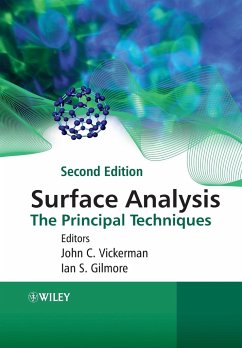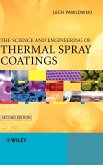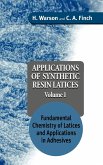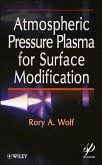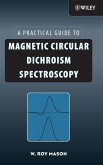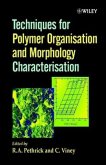Surface Analysis
The Principal Techniques
Ed. by John C. Vickerman and Ian Gilmore
Surface Analysis
The Principal Techniques
Ed. by John C. Vickerman and Ian Gilmore
- Broschiertes Buch
- Merkliste
- Auf die Merkliste
- Bewerten Bewerten
- Teilen
- Produkt teilen
- Produkterinnerung
- Produkterinnerung
This completely updated and revised second edition of Surface Analysis: The Principal Techniques, deals with the characterisation and understanding of the outer layers of substrates, how they react, look and function which are all of interest to surface scientists.
Die Theorie und Praxis der Oberflächenanalyse wird von Experten mehrerer Fachgebiete erläutert. Dadurch wird der Leser in die Lage versetzt, Ergebnisse und Datenreihen zu verstehen und umzusetzen.
Andere Kunden interessierten sich auch für
![Dictionary of Nanotechnology, Colloid and Interface Science Dictionary of Nanotechnology, Colloid and Interface Science]() Laurier L. SchrammDictionary of Nanotechnology, Colloid and Interface Science166,99 €
Laurier L. SchrammDictionary of Nanotechnology, Colloid and Interface Science166,99 €![The Science and Engineering of Thermal Spray Coatings The Science and Engineering of Thermal Spray Coatings]() Lech PawlowskiThe Science and Engineering of Thermal Spray Coatings363,99 €
Lech PawlowskiThe Science and Engineering of Thermal Spray Coatings363,99 €![Applications of Synthetic Resin Latices, Fundamental Chemistry of Latices and Applications in Adhesives Applications of Synthetic Resin Latices, Fundamental Chemistry of Latices and Applications in Adhesives]() Henry WarsonApplications of Synthetic Resin Latices, Fundamental Chemistry of Latices and Applications in Adhesives591,99 €
Henry WarsonApplications of Synthetic Resin Latices, Fundamental Chemistry of Latices and Applications in Adhesives591,99 €![Colloidal Dispersions Colloidal Dispersions]() Ian D. MorrisonColloidal Dispersions265,99 €
Ian D. MorrisonColloidal Dispersions265,99 €![Atmospheric Pressure Plasma for Surface Modification Atmospheric Pressure Plasma for Surface Modification]() Rory A. WolfAtmospheric Pressure Plasma for Surface Modification230,99 €
Rory A. WolfAtmospheric Pressure Plasma for Surface Modification230,99 €![Magnetic Circular Dichroism Spectroscopy Magnetic Circular Dichroism Spectroscopy]() W. Roy MasonMagnetic Circular Dichroism Spectroscopy226,99 €
W. Roy MasonMagnetic Circular Dichroism Spectroscopy226,99 €![Techniques for Polymer Organisation and Morphology Characterisation Techniques for Polymer Organisation and Morphology Characterisation]() R. A. Pethrick / C. Viney (Hgg.)Techniques for Polymer Organisation and Morphology Characterisation362,99 €
R. A. Pethrick / C. Viney (Hgg.)Techniques for Polymer Organisation and Morphology Characterisation362,99 €-
-
-
This completely updated and revised second edition of Surface Analysis: The Principal Techniques, deals with the characterisation and understanding of the outer layers of substrates, how they react, look and function which are all of interest to surface scientists.
Die Theorie und Praxis der Oberflächenanalyse wird von Experten mehrerer Fachgebiete erläutert. Dadurch wird der Leser in die Lage versetzt, Ergebnisse und Datenreihen zu verstehen und umzusetzen.
Hinweis: Dieser Artikel kann nur an eine deutsche Lieferadresse ausgeliefert werden.
Die Theorie und Praxis der Oberflächenanalyse wird von Experten mehrerer Fachgebiete erläutert. Dadurch wird der Leser in die Lage versetzt, Ergebnisse und Datenreihen zu verstehen und umzusetzen.
Hinweis: Dieser Artikel kann nur an eine deutsche Lieferadresse ausgeliefert werden.
Produktdetails
- Produktdetails
- Verlag: Wiley & Sons
- 2. Aufl.
- Seitenzahl: 688
- Erscheinungstermin: 1. Mai 2009
- Englisch
- Abmessung: 244mm x 170mm x 37mm
- Gewicht: 1450g
- ISBN-13: 9780470017647
- ISBN-10: 0470017643
- Artikelnr.: 23800526
- Herstellerkennzeichnung
- Libri GmbH
- Europaallee 1
- 36244 Bad Hersfeld
- gpsr@libri.de
- Verlag: Wiley & Sons
- 2. Aufl.
- Seitenzahl: 688
- Erscheinungstermin: 1. Mai 2009
- Englisch
- Abmessung: 244mm x 170mm x 37mm
- Gewicht: 1450g
- ISBN-13: 9780470017647
- ISBN-10: 0470017643
- Artikelnr.: 23800526
- Herstellerkennzeichnung
- Libri GmbH
- Europaallee 1
- 36244 Bad Hersfeld
- gpsr@libri.de
John C. Vickerman BSc in Chemistry (Edinburgh), Ph.D. in Surface Chemistry (Bristol), DSc (Bristol). Predoctoral fellowships at the Universities of Perugia and Rome, postdoctoral fellowships at the University of Bristol and the Technical University of Eindhoven. Sabbatical study periods at the University of Munich, the Free University of Berlin and Pennsylvania State University. Dr Ian Gilmore, Surface and Nano-Analysis, National Physical Laboratory, Teddington, UK Ian is a Principal Research Scientist in the Surface and Nano-Analysis Research team and joined NPL in 1991. His research has a focus on the analysis of complex molecules at surfaces. Recent research has led to the development of a novel new variant of static static SIMS called gentle-SIMS or G-SIMS, He received a degree in Physics from the University of Manchester in 1991 and a PhD from the University of Loughborough in 2000. Ian is a Fellow of the Institute of Physics a member of the EPSRC College and a member of the American Vacuum Society.
List of Contributors xv
Preface xvii
1 Introduction 1
John C. Vickerman
1.1 How do we Define the Surface? 1
1.2 How Many Atoms in a Surface? 2
1.3 Information Required 3
1.4 Surface Sensitivity 5
1.5 Radiation Effects - Surface Damage 7
1.6 Complexity of the Data 8
2 Auger Electron Spectroscopy 9
Hans Jörg Mathieu
2.1 Introduction 9
2.2 Principle of the Auger Process 10
2.2.1 Kinetic Energies of Auger Peaks 11
2.2.2 Ionization Cross-Section 15
2.2.3 Comparison of Auger and Photon Emission 16
2.2.4 Electron Backscattering 17
2.2.5 Escape Depth 18
2.2.6 Chemical Shifts 19
2.3 Instrumentation 21
2.3.1 Electron Sources 22
2.3.2 Spectrometers 24
2.3.3 Modes of Acquisition 24
2.3.4 Detection Limits 29
2.3.5 Instrument Calibration 30
2.4 Quantitative Analysis 31
2.5 Depth Profile Analysis 33
2.5.1 Thin Film Calibration Standard 34
2.5.2 Depth Resolution 36
2.5.3 Sputter Rates 37
2.5.4 Preferential Sputtering 40
2.5.5 ¿-Correction 41
2.5.6 Chemical Shifts in AES Profiles 42
2.6 Summary 43
References 44
Problems 45
3 Electron Spectroscopy for Chemical Analysis 47
Buddy D. Ratner and David G. Castner
3.1 Overview 47
3.1.1 The Basic ESCA Experiment 48
3.1.2 A History of the Photoelectric Effect and ESCA 48
3.1.3 Information Provided by ESCA 49
3.2 X-ray Interaction withMatter, the Photoelectron Effect and
Photoemission from Solids 50
3.3 Binding Energy and the Chemical Shift 52
3.3.1 Koopmans' Theorem 53
3.3.2 Initial State Effects 53
3.3.3 Final State Effects 57
3.3.4 Binding Energy Referencing 58
3.3.5 Charge Compensation in Insulators 60
3.3.6 Peak Widths 61
3.3.7 Peak Fitting 62
3.4 Inelastic Mean Free Path and Sampling Depth 63
3.5 Quantification 67
3.5.1 Quantification Methods 68
3.5.2 Quantification Standards 70
3.5.3 Quantification Example 71
3.6 Spectral Features 73
3.7 Instrumentation 80
3.7.1 Vacuum Systems for ESCA Experiments 80
3.7.2 X-ray Sources 82
3.7.3 Analyzers 84
3.7.4 Data Systems 86
3.7.5 Accessories 88
3.8 Spectral Quality 88
3.9 Depth Profiling 89
3.10 X-Y Mapping and Imaging 94
3.11 Chemical Derivatization 96
3.12 Valence Band 96
3.13 Perspectives 99
3.14 Conclusions 100
Acknowledgements 101
References 101
Problems 109
4 Molecular Surface Mass Spectrometry by SIMS 113
John C. Vickerman
4.1 Introduction 113
4.2 Basic Concepts 116
4.2.1 The Basic Equation 116
4.2.2 Sputtering 116
4.2.3 Ionization 121
4.2.4 The Static Limit and Depth Profiling 123
4.2.5 Surface Charging 124
4.3 Experimental Requirements 125
4.3.1 Primary Beam 125
4.3.2 Mass Analysers 131
4.4 Secondary Ion Formation 140
4.4.1 Introduction 140
4.4.2 Models of Sputtering 143
4.4.3 Ionization 149
4.4.4 Influence of the Matrix Effect in Organic Materials Analysis 151
4.5 Modes of Analysis 155
4.5.1 Spectral Analysis 155
4.5.2 SIMS Imaging or Scanning SIMS 166
4.5.3 Depth Profiling and 3D Imaging 173
4.6 Ionization of the Sputtered Neutrals 183
4.6.1 Photon Induced Post-Ionization 184
4.6.2 Photon Post-Ionization and SIMS 190
4.7 Ambient Methods of Desorption Mass Spectrometry 194
References 199
Problems 203
5 Dynamic SIMS 207
David McPhail and Mark Dowsett
5.1 Fundamentals and Attributes 207
5.1.1 Introduction 207
5.1.2 Variations on a Theme 211
5.1.3 The Interaction of the Primary Beam with the Sample 214
5.1.4 Depth Profiling 217
5.1.5 Complimentary Techniques and Data Comparison 224
5.2 Areas and Methods of Application 226
5.2.1 Dopant and Impurity Profiling 226
5.2.2 Profiling High Concentration Species 227
5.2.3 Use of SIMS in Near Surface Regions 230
5.2.4 Applications of SIMS Depth Profiling in Materials Science 233
5.3 Quantification of Data 233
5.3.1 Quantification of Depth Profiles 233
5.3.2 Fabrication of Standards 239
5.3.3 Depth Measurement and Calibration of the Depth Scale 241
5.3.4 Sources of Error in Depth Profiles 242
5.4 Novel Approaches 246
5.4.1 Bevelling and Imaging or Line Scanning 246
5.4.2 Reverse-Side Depth Profiling 250
5.4.3 Two-Dimensional Analysis 251
5.5 Instrumentation 252
5.5.1 Overview 252
5.5.2 Secondary Ion Optics 253
5.5.3 Dual Beam Methods and ToF 254
5.5.4 Gating 254
5.6 Conclusions 256
References 257
Problems 267
6 Low-Energy Ion Scattering and Rutherford Backscattering 269
Edmund Taglauer
6.1 Introduction 269
6.2 Physical Basis 271
6.2.1 The Scattering Process 271
6.2.2 Collision Kinematics 272
6.2.3 Interaction Potentials and Cross-sections 275
6.2.4 Shadow Cone 278
6.2.5 Computer Simulation 281
6.3 Rutherford Backscattering 284
6.3.1 Energy Loss 284
6.3.2 Apparatus 287
6.3.3 Beam Effects 289
6.3.4 Quantitative Layer Analysis 290
6.3.5 Structure Analysis 293
6.3.6 Medium-Energy Ion Scattering (MEIS) 297
6.3.7 The Value of RBS and Comparison to Related Techniques 298
6.4 Low-Energy Ion Scattering 300
6.4.1 Neutralization 300
6.4.2 Apparatus 303
6.4.3 Surface Composition Analysis 307
6.4.4 Structure Analysis 316
6.4.5 Conclusions 323
Acknowledgement 324
References 324
Problems 330
Key Facts 330
7 Vibrational Spectroscopy from Surfaces 333
Martyn E. Pemble and Peter Gardner
7.1 Introduction 333
7.2 Infrared Spectroscopy from Surfaces 334
7.2.1 Transmission IR Spectroscopy 335
7.2.2 Photoacoustic Spectroscopy 340
7.2.3 Reflectance Methods 342
7.3 Electron Energy Loss Spectroscopy (EELS) 361
7.3.1 Inelastic or 'Impact' Scattering 362
7.3.2 Elastic or 'Dipole' Scattering 365
7.3.3 The EELS (HREELS) Experiment 367
7.4 The Group Theory of Surface Vibrations 368
7.4.1 General Approach 368
7.4.2 Group Theory Analysis of Ethyne Adsorbed at a Flat, Featureless
Surface 369
7.4.3 Group Theory Analysis of Ethyne Adsorbed at a (100) Surface of an FCC
Metal 373
7.4.4 The Expected Form of the RAIRS and Dipolar EELS (HREELS) Spectra 374
7.5 Laser Raman Spectroscopy from Surfaces 375
7.5.1 Theory of Raman Scattering 376
7.5.2 The Study of Collective Surface Vibrations (Phonons) using Raman
Spectroscopy 377
7.5.3 Raman Spectroscopy from Metal Surfaces 379
7.5.4 Spatial Resolution in Surface Raman Spectroscopy 380
7.5.5 Fourier Transform Surface Raman Techniques 380
7.6 Inelastic Neutron Scattering (INS) 381
7.6.1 Introduction to INS 381
7.6.2 The INS Spectrum 382
7.6.3 INS Spectra ofHydrodesesulfurization Catalysts 382
7.7 Sum-Frequency Generation Methods 383
References 386
Problems 389
8 Surface Structure Determination by Interference Techniques 391
Christopher A. Lucas
8.1 Introduction 391
8.1.1 Basic Theory of Diffraction - Three Dimensions 392
8.1.2 Extension to Surfaces - Two Dimensions 398
8.2 Electron Diffraction Techniques 402
8.2.1 General Introduction 402
8.2.2 Low Energy Electron Diffraction 403
8.2.3 Reflection High Energy Electron Diffraction (RHEED) 418
8.3 X-ray Techniques 424
8.3.1 General Introduction 424
8.3.2 X-ray Adsorption Spectroscopy 427
8.3.3 Surface X-ray Diffraction (SXRD) 447
8.3.4 X-ray Standing Waves (XSWs) 456
8.4 Photoelectron Diffraction 464
8.4.1 Introduction 464
8.4.2 Theoretical Considerations 465
8.4.3 Experimental Details 469
8.4.4 Applications of XPD and PhD 470
References 474
9 Scanning Probe Microscopy 479
Graham J. Leggett
9.1 Introduction 479
9.2 Scanning Tunnelling Microscopy 480
9.2.1 Basic Principles of the STM 481
9.2.2 Instrumentation and Basic Operation Parameters 487
9.2.3 Atomic Resolution and Spectroscopy: Surface Crystal and Electronic
Structure 489
9.3 Atomic Force Microscopy 511
9.3.1 Basic Principles of the AFM 511
9.3.2 Chemical Force Microscopy 524
9.3.3 Friction Force Microscopy 526
9.3.4 Biological Applications of the AFM 532
9.4 Scanning Near-Field Optical Microscopy 537
9.4.1 Optical Fibre Near-Field Microscopy 537
9.4.2 Apertureless SNOM 541
9.5 Other Scanning Probe Microscopy Techniques 542
9.6 Lithography Using Probe Microscopy Methods 544
9.6.1 STM Lithography 544
9.6.2 AFM Lithography 545
9.6.3 Near-Field Photolithography 549
9.6.4 The 'Millipede' 550
9.7 Conclusions 551
References 552
Problems 559
10 The Application of Multivariate Data Analysis Techniques in Surface
Analysis 563
Joanna L.S. Lee and Ian S. Gilmore
10.1 Introduction 563
10.2 Basic Concepts 565
10.2.1 Matrix and Vector Representation of Data 565
10.2.2 Dimensionality and Rank 567
10.2.3 Relation to Multivariate Analysis 568
10.2.4 Choosing the Appropriate Multivariate Method 568
10.3 Factor Analysis for Identification 569
10.3.1 Terminology 570
10.3.2 Mathematical Background 570
10.3.3 Principal Component Analysis 571
10.3.4 Multivariate Curve Resolution 579
10.3.5 Analysis of Multivariate Images 582
10.4 Regression Methods for Quantification 591
10.4.1 Terminology 591
10.4.2 Mathematical Background 592
10.4.3 Principal Component Regression 594
10.4.4 Partial Least Squares Regression 595
10.4.5 Calibration, Validation and Prediction 596
10.4.6 Example - Correlating ToF-SIMS Spectra with PolymerWettability Using
PLS 598
10.5 Methods for Classification 600
10.5.1 Discriminant Function Analysis 601
10.5.2 Hierarchal Cluster Analysis 602
10.5.3 Artificial Neural Networks 603
10.6 Summary and Conclusion 606
Acknowledgements 608
References 608
Problems 611
Appendix 1 Vacuum Technology for Applied Surface Science 613
Rod Wilson
A1.1 Introduction: Gases and Vapours 613
A1.2 The Pressure Regions of Vacuum Technology and their Characteristics
619
A1.3 Production of a Vacuum 622
A1.3.1 Types of Pump 622
A1.3.2 Evacuation of a Chamber 634
A1.3.3 Choice of Pumping System 635
A1.3.4 Determination of the Size of Backing Pumps 636
A1.3.5 Flanges and their Seals 636
A1.4 Measurement of Low Pressures 637
A1.4.1 Gauges for Direct Pressure Measurement 638
A1.4.2 Gauges Using Indirect Means of Pressure Measurement 640
A1.4.3 Partial Pressure Measuring Instruments 644
Acknowledgement 647
References 647
Appendix 2 Units, Fundamental Physical Constants and Conversions 649
A2.1 Base Units of the SI 649
A2.2 Fundamental Physical Constants 650
A2.3 Other Units and Conversions to SI 651
References 652
Index 653
Preface xvii
1 Introduction 1
John C. Vickerman
1.1 How do we Define the Surface? 1
1.2 How Many Atoms in a Surface? 2
1.3 Information Required 3
1.4 Surface Sensitivity 5
1.5 Radiation Effects - Surface Damage 7
1.6 Complexity of the Data 8
2 Auger Electron Spectroscopy 9
Hans Jörg Mathieu
2.1 Introduction 9
2.2 Principle of the Auger Process 10
2.2.1 Kinetic Energies of Auger Peaks 11
2.2.2 Ionization Cross-Section 15
2.2.3 Comparison of Auger and Photon Emission 16
2.2.4 Electron Backscattering 17
2.2.5 Escape Depth 18
2.2.6 Chemical Shifts 19
2.3 Instrumentation 21
2.3.1 Electron Sources 22
2.3.2 Spectrometers 24
2.3.3 Modes of Acquisition 24
2.3.4 Detection Limits 29
2.3.5 Instrument Calibration 30
2.4 Quantitative Analysis 31
2.5 Depth Profile Analysis 33
2.5.1 Thin Film Calibration Standard 34
2.5.2 Depth Resolution 36
2.5.3 Sputter Rates 37
2.5.4 Preferential Sputtering 40
2.5.5 ¿-Correction 41
2.5.6 Chemical Shifts in AES Profiles 42
2.6 Summary 43
References 44
Problems 45
3 Electron Spectroscopy for Chemical Analysis 47
Buddy D. Ratner and David G. Castner
3.1 Overview 47
3.1.1 The Basic ESCA Experiment 48
3.1.2 A History of the Photoelectric Effect and ESCA 48
3.1.3 Information Provided by ESCA 49
3.2 X-ray Interaction withMatter, the Photoelectron Effect and
Photoemission from Solids 50
3.3 Binding Energy and the Chemical Shift 52
3.3.1 Koopmans' Theorem 53
3.3.2 Initial State Effects 53
3.3.3 Final State Effects 57
3.3.4 Binding Energy Referencing 58
3.3.5 Charge Compensation in Insulators 60
3.3.6 Peak Widths 61
3.3.7 Peak Fitting 62
3.4 Inelastic Mean Free Path and Sampling Depth 63
3.5 Quantification 67
3.5.1 Quantification Methods 68
3.5.2 Quantification Standards 70
3.5.3 Quantification Example 71
3.6 Spectral Features 73
3.7 Instrumentation 80
3.7.1 Vacuum Systems for ESCA Experiments 80
3.7.2 X-ray Sources 82
3.7.3 Analyzers 84
3.7.4 Data Systems 86
3.7.5 Accessories 88
3.8 Spectral Quality 88
3.9 Depth Profiling 89
3.10 X-Y Mapping and Imaging 94
3.11 Chemical Derivatization 96
3.12 Valence Band 96
3.13 Perspectives 99
3.14 Conclusions 100
Acknowledgements 101
References 101
Problems 109
4 Molecular Surface Mass Spectrometry by SIMS 113
John C. Vickerman
4.1 Introduction 113
4.2 Basic Concepts 116
4.2.1 The Basic Equation 116
4.2.2 Sputtering 116
4.2.3 Ionization 121
4.2.4 The Static Limit and Depth Profiling 123
4.2.5 Surface Charging 124
4.3 Experimental Requirements 125
4.3.1 Primary Beam 125
4.3.2 Mass Analysers 131
4.4 Secondary Ion Formation 140
4.4.1 Introduction 140
4.4.2 Models of Sputtering 143
4.4.3 Ionization 149
4.4.4 Influence of the Matrix Effect in Organic Materials Analysis 151
4.5 Modes of Analysis 155
4.5.1 Spectral Analysis 155
4.5.2 SIMS Imaging or Scanning SIMS 166
4.5.3 Depth Profiling and 3D Imaging 173
4.6 Ionization of the Sputtered Neutrals 183
4.6.1 Photon Induced Post-Ionization 184
4.6.2 Photon Post-Ionization and SIMS 190
4.7 Ambient Methods of Desorption Mass Spectrometry 194
References 199
Problems 203
5 Dynamic SIMS 207
David McPhail and Mark Dowsett
5.1 Fundamentals and Attributes 207
5.1.1 Introduction 207
5.1.2 Variations on a Theme 211
5.1.3 The Interaction of the Primary Beam with the Sample 214
5.1.4 Depth Profiling 217
5.1.5 Complimentary Techniques and Data Comparison 224
5.2 Areas and Methods of Application 226
5.2.1 Dopant and Impurity Profiling 226
5.2.2 Profiling High Concentration Species 227
5.2.3 Use of SIMS in Near Surface Regions 230
5.2.4 Applications of SIMS Depth Profiling in Materials Science 233
5.3 Quantification of Data 233
5.3.1 Quantification of Depth Profiles 233
5.3.2 Fabrication of Standards 239
5.3.3 Depth Measurement and Calibration of the Depth Scale 241
5.3.4 Sources of Error in Depth Profiles 242
5.4 Novel Approaches 246
5.4.1 Bevelling and Imaging or Line Scanning 246
5.4.2 Reverse-Side Depth Profiling 250
5.4.3 Two-Dimensional Analysis 251
5.5 Instrumentation 252
5.5.1 Overview 252
5.5.2 Secondary Ion Optics 253
5.5.3 Dual Beam Methods and ToF 254
5.5.4 Gating 254
5.6 Conclusions 256
References 257
Problems 267
6 Low-Energy Ion Scattering and Rutherford Backscattering 269
Edmund Taglauer
6.1 Introduction 269
6.2 Physical Basis 271
6.2.1 The Scattering Process 271
6.2.2 Collision Kinematics 272
6.2.3 Interaction Potentials and Cross-sections 275
6.2.4 Shadow Cone 278
6.2.5 Computer Simulation 281
6.3 Rutherford Backscattering 284
6.3.1 Energy Loss 284
6.3.2 Apparatus 287
6.3.3 Beam Effects 289
6.3.4 Quantitative Layer Analysis 290
6.3.5 Structure Analysis 293
6.3.6 Medium-Energy Ion Scattering (MEIS) 297
6.3.7 The Value of RBS and Comparison to Related Techniques 298
6.4 Low-Energy Ion Scattering 300
6.4.1 Neutralization 300
6.4.2 Apparatus 303
6.4.3 Surface Composition Analysis 307
6.4.4 Structure Analysis 316
6.4.5 Conclusions 323
Acknowledgement 324
References 324
Problems 330
Key Facts 330
7 Vibrational Spectroscopy from Surfaces 333
Martyn E. Pemble and Peter Gardner
7.1 Introduction 333
7.2 Infrared Spectroscopy from Surfaces 334
7.2.1 Transmission IR Spectroscopy 335
7.2.2 Photoacoustic Spectroscopy 340
7.2.3 Reflectance Methods 342
7.3 Electron Energy Loss Spectroscopy (EELS) 361
7.3.1 Inelastic or 'Impact' Scattering 362
7.3.2 Elastic or 'Dipole' Scattering 365
7.3.3 The EELS (HREELS) Experiment 367
7.4 The Group Theory of Surface Vibrations 368
7.4.1 General Approach 368
7.4.2 Group Theory Analysis of Ethyne Adsorbed at a Flat, Featureless
Surface 369
7.4.3 Group Theory Analysis of Ethyne Adsorbed at a (100) Surface of an FCC
Metal 373
7.4.4 The Expected Form of the RAIRS and Dipolar EELS (HREELS) Spectra 374
7.5 Laser Raman Spectroscopy from Surfaces 375
7.5.1 Theory of Raman Scattering 376
7.5.2 The Study of Collective Surface Vibrations (Phonons) using Raman
Spectroscopy 377
7.5.3 Raman Spectroscopy from Metal Surfaces 379
7.5.4 Spatial Resolution in Surface Raman Spectroscopy 380
7.5.5 Fourier Transform Surface Raman Techniques 380
7.6 Inelastic Neutron Scattering (INS) 381
7.6.1 Introduction to INS 381
7.6.2 The INS Spectrum 382
7.6.3 INS Spectra ofHydrodesesulfurization Catalysts 382
7.7 Sum-Frequency Generation Methods 383
References 386
Problems 389
8 Surface Structure Determination by Interference Techniques 391
Christopher A. Lucas
8.1 Introduction 391
8.1.1 Basic Theory of Diffraction - Three Dimensions 392
8.1.2 Extension to Surfaces - Two Dimensions 398
8.2 Electron Diffraction Techniques 402
8.2.1 General Introduction 402
8.2.2 Low Energy Electron Diffraction 403
8.2.3 Reflection High Energy Electron Diffraction (RHEED) 418
8.3 X-ray Techniques 424
8.3.1 General Introduction 424
8.3.2 X-ray Adsorption Spectroscopy 427
8.3.3 Surface X-ray Diffraction (SXRD) 447
8.3.4 X-ray Standing Waves (XSWs) 456
8.4 Photoelectron Diffraction 464
8.4.1 Introduction 464
8.4.2 Theoretical Considerations 465
8.4.3 Experimental Details 469
8.4.4 Applications of XPD and PhD 470
References 474
9 Scanning Probe Microscopy 479
Graham J. Leggett
9.1 Introduction 479
9.2 Scanning Tunnelling Microscopy 480
9.2.1 Basic Principles of the STM 481
9.2.2 Instrumentation and Basic Operation Parameters 487
9.2.3 Atomic Resolution and Spectroscopy: Surface Crystal and Electronic
Structure 489
9.3 Atomic Force Microscopy 511
9.3.1 Basic Principles of the AFM 511
9.3.2 Chemical Force Microscopy 524
9.3.3 Friction Force Microscopy 526
9.3.4 Biological Applications of the AFM 532
9.4 Scanning Near-Field Optical Microscopy 537
9.4.1 Optical Fibre Near-Field Microscopy 537
9.4.2 Apertureless SNOM 541
9.5 Other Scanning Probe Microscopy Techniques 542
9.6 Lithography Using Probe Microscopy Methods 544
9.6.1 STM Lithography 544
9.6.2 AFM Lithography 545
9.6.3 Near-Field Photolithography 549
9.6.4 The 'Millipede' 550
9.7 Conclusions 551
References 552
Problems 559
10 The Application of Multivariate Data Analysis Techniques in Surface
Analysis 563
Joanna L.S. Lee and Ian S. Gilmore
10.1 Introduction 563
10.2 Basic Concepts 565
10.2.1 Matrix and Vector Representation of Data 565
10.2.2 Dimensionality and Rank 567
10.2.3 Relation to Multivariate Analysis 568
10.2.4 Choosing the Appropriate Multivariate Method 568
10.3 Factor Analysis for Identification 569
10.3.1 Terminology 570
10.3.2 Mathematical Background 570
10.3.3 Principal Component Analysis 571
10.3.4 Multivariate Curve Resolution 579
10.3.5 Analysis of Multivariate Images 582
10.4 Regression Methods for Quantification 591
10.4.1 Terminology 591
10.4.2 Mathematical Background 592
10.4.3 Principal Component Regression 594
10.4.4 Partial Least Squares Regression 595
10.4.5 Calibration, Validation and Prediction 596
10.4.6 Example - Correlating ToF-SIMS Spectra with PolymerWettability Using
PLS 598
10.5 Methods for Classification 600
10.5.1 Discriminant Function Analysis 601
10.5.2 Hierarchal Cluster Analysis 602
10.5.3 Artificial Neural Networks 603
10.6 Summary and Conclusion 606
Acknowledgements 608
References 608
Problems 611
Appendix 1 Vacuum Technology for Applied Surface Science 613
Rod Wilson
A1.1 Introduction: Gases and Vapours 613
A1.2 The Pressure Regions of Vacuum Technology and their Characteristics
619
A1.3 Production of a Vacuum 622
A1.3.1 Types of Pump 622
A1.3.2 Evacuation of a Chamber 634
A1.3.3 Choice of Pumping System 635
A1.3.4 Determination of the Size of Backing Pumps 636
A1.3.5 Flanges and their Seals 636
A1.4 Measurement of Low Pressures 637
A1.4.1 Gauges for Direct Pressure Measurement 638
A1.4.2 Gauges Using Indirect Means of Pressure Measurement 640
A1.4.3 Partial Pressure Measuring Instruments 644
Acknowledgement 647
References 647
Appendix 2 Units, Fundamental Physical Constants and Conversions 649
A2.1 Base Units of the SI 649
A2.2 Fundamental Physical Constants 650
A2.3 Other Units and Conversions to SI 651
References 652
Index 653
List of Contributors xv
Preface xvii
1 Introduction 1
John C. Vickerman
1.1 How do we Define the Surface? 1
1.2 How Many Atoms in a Surface? 2
1.3 Information Required 3
1.4 Surface Sensitivity 5
1.5 Radiation Effects - Surface Damage 7
1.6 Complexity of the Data 8
2 Auger Electron Spectroscopy 9
Hans Jörg Mathieu
2.1 Introduction 9
2.2 Principle of the Auger Process 10
2.2.1 Kinetic Energies of Auger Peaks 11
2.2.2 Ionization Cross-Section 15
2.2.3 Comparison of Auger and Photon Emission 16
2.2.4 Electron Backscattering 17
2.2.5 Escape Depth 18
2.2.6 Chemical Shifts 19
2.3 Instrumentation 21
2.3.1 Electron Sources 22
2.3.2 Spectrometers 24
2.3.3 Modes of Acquisition 24
2.3.4 Detection Limits 29
2.3.5 Instrument Calibration 30
2.4 Quantitative Analysis 31
2.5 Depth Profile Analysis 33
2.5.1 Thin Film Calibration Standard 34
2.5.2 Depth Resolution 36
2.5.3 Sputter Rates 37
2.5.4 Preferential Sputtering 40
2.5.5 ¿-Correction 41
2.5.6 Chemical Shifts in AES Profiles 42
2.6 Summary 43
References 44
Problems 45
3 Electron Spectroscopy for Chemical Analysis 47
Buddy D. Ratner and David G. Castner
3.1 Overview 47
3.1.1 The Basic ESCA Experiment 48
3.1.2 A History of the Photoelectric Effect and ESCA 48
3.1.3 Information Provided by ESCA 49
3.2 X-ray Interaction withMatter, the Photoelectron Effect and
Photoemission from Solids 50
3.3 Binding Energy and the Chemical Shift 52
3.3.1 Koopmans' Theorem 53
3.3.2 Initial State Effects 53
3.3.3 Final State Effects 57
3.3.4 Binding Energy Referencing 58
3.3.5 Charge Compensation in Insulators 60
3.3.6 Peak Widths 61
3.3.7 Peak Fitting 62
3.4 Inelastic Mean Free Path and Sampling Depth 63
3.5 Quantification 67
3.5.1 Quantification Methods 68
3.5.2 Quantification Standards 70
3.5.3 Quantification Example 71
3.6 Spectral Features 73
3.7 Instrumentation 80
3.7.1 Vacuum Systems for ESCA Experiments 80
3.7.2 X-ray Sources 82
3.7.3 Analyzers 84
3.7.4 Data Systems 86
3.7.5 Accessories 88
3.8 Spectral Quality 88
3.9 Depth Profiling 89
3.10 X-Y Mapping and Imaging 94
3.11 Chemical Derivatization 96
3.12 Valence Band 96
3.13 Perspectives 99
3.14 Conclusions 100
Acknowledgements 101
References 101
Problems 109
4 Molecular Surface Mass Spectrometry by SIMS 113
John C. Vickerman
4.1 Introduction 113
4.2 Basic Concepts 116
4.2.1 The Basic Equation 116
4.2.2 Sputtering 116
4.2.3 Ionization 121
4.2.4 The Static Limit and Depth Profiling 123
4.2.5 Surface Charging 124
4.3 Experimental Requirements 125
4.3.1 Primary Beam 125
4.3.2 Mass Analysers 131
4.4 Secondary Ion Formation 140
4.4.1 Introduction 140
4.4.2 Models of Sputtering 143
4.4.3 Ionization 149
4.4.4 Influence of the Matrix Effect in Organic Materials Analysis 151
4.5 Modes of Analysis 155
4.5.1 Spectral Analysis 155
4.5.2 SIMS Imaging or Scanning SIMS 166
4.5.3 Depth Profiling and 3D Imaging 173
4.6 Ionization of the Sputtered Neutrals 183
4.6.1 Photon Induced Post-Ionization 184
4.6.2 Photon Post-Ionization and SIMS 190
4.7 Ambient Methods of Desorption Mass Spectrometry 194
References 199
Problems 203
5 Dynamic SIMS 207
David McPhail and Mark Dowsett
5.1 Fundamentals and Attributes 207
5.1.1 Introduction 207
5.1.2 Variations on a Theme 211
5.1.3 The Interaction of the Primary Beam with the Sample 214
5.1.4 Depth Profiling 217
5.1.5 Complimentary Techniques and Data Comparison 224
5.2 Areas and Methods of Application 226
5.2.1 Dopant and Impurity Profiling 226
5.2.2 Profiling High Concentration Species 227
5.2.3 Use of SIMS in Near Surface Regions 230
5.2.4 Applications of SIMS Depth Profiling in Materials Science 233
5.3 Quantification of Data 233
5.3.1 Quantification of Depth Profiles 233
5.3.2 Fabrication of Standards 239
5.3.3 Depth Measurement and Calibration of the Depth Scale 241
5.3.4 Sources of Error in Depth Profiles 242
5.4 Novel Approaches 246
5.4.1 Bevelling and Imaging or Line Scanning 246
5.4.2 Reverse-Side Depth Profiling 250
5.4.3 Two-Dimensional Analysis 251
5.5 Instrumentation 252
5.5.1 Overview 252
5.5.2 Secondary Ion Optics 253
5.5.3 Dual Beam Methods and ToF 254
5.5.4 Gating 254
5.6 Conclusions 256
References 257
Problems 267
6 Low-Energy Ion Scattering and Rutherford Backscattering 269
Edmund Taglauer
6.1 Introduction 269
6.2 Physical Basis 271
6.2.1 The Scattering Process 271
6.2.2 Collision Kinematics 272
6.2.3 Interaction Potentials and Cross-sections 275
6.2.4 Shadow Cone 278
6.2.5 Computer Simulation 281
6.3 Rutherford Backscattering 284
6.3.1 Energy Loss 284
6.3.2 Apparatus 287
6.3.3 Beam Effects 289
6.3.4 Quantitative Layer Analysis 290
6.3.5 Structure Analysis 293
6.3.6 Medium-Energy Ion Scattering (MEIS) 297
6.3.7 The Value of RBS and Comparison to Related Techniques 298
6.4 Low-Energy Ion Scattering 300
6.4.1 Neutralization 300
6.4.2 Apparatus 303
6.4.3 Surface Composition Analysis 307
6.4.4 Structure Analysis 316
6.4.5 Conclusions 323
Acknowledgement 324
References 324
Problems 330
Key Facts 330
7 Vibrational Spectroscopy from Surfaces 333
Martyn E. Pemble and Peter Gardner
7.1 Introduction 333
7.2 Infrared Spectroscopy from Surfaces 334
7.2.1 Transmission IR Spectroscopy 335
7.2.2 Photoacoustic Spectroscopy 340
7.2.3 Reflectance Methods 342
7.3 Electron Energy Loss Spectroscopy (EELS) 361
7.3.1 Inelastic or 'Impact' Scattering 362
7.3.2 Elastic or 'Dipole' Scattering 365
7.3.3 The EELS (HREELS) Experiment 367
7.4 The Group Theory of Surface Vibrations 368
7.4.1 General Approach 368
7.4.2 Group Theory Analysis of Ethyne Adsorbed at a Flat, Featureless
Surface 369
7.4.3 Group Theory Analysis of Ethyne Adsorbed at a (100) Surface of an FCC
Metal 373
7.4.4 The Expected Form of the RAIRS and Dipolar EELS (HREELS) Spectra 374
7.5 Laser Raman Spectroscopy from Surfaces 375
7.5.1 Theory of Raman Scattering 376
7.5.2 The Study of Collective Surface Vibrations (Phonons) using Raman
Spectroscopy 377
7.5.3 Raman Spectroscopy from Metal Surfaces 379
7.5.4 Spatial Resolution in Surface Raman Spectroscopy 380
7.5.5 Fourier Transform Surface Raman Techniques 380
7.6 Inelastic Neutron Scattering (INS) 381
7.6.1 Introduction to INS 381
7.6.2 The INS Spectrum 382
7.6.3 INS Spectra ofHydrodesesulfurization Catalysts 382
7.7 Sum-Frequency Generation Methods 383
References 386
Problems 389
8 Surface Structure Determination by Interference Techniques 391
Christopher A. Lucas
8.1 Introduction 391
8.1.1 Basic Theory of Diffraction - Three Dimensions 392
8.1.2 Extension to Surfaces - Two Dimensions 398
8.2 Electron Diffraction Techniques 402
8.2.1 General Introduction 402
8.2.2 Low Energy Electron Diffraction 403
8.2.3 Reflection High Energy Electron Diffraction (RHEED) 418
8.3 X-ray Techniques 424
8.3.1 General Introduction 424
8.3.2 X-ray Adsorption Spectroscopy 427
8.3.3 Surface X-ray Diffraction (SXRD) 447
8.3.4 X-ray Standing Waves (XSWs) 456
8.4 Photoelectron Diffraction 464
8.4.1 Introduction 464
8.4.2 Theoretical Considerations 465
8.4.3 Experimental Details 469
8.4.4 Applications of XPD and PhD 470
References 474
9 Scanning Probe Microscopy 479
Graham J. Leggett
9.1 Introduction 479
9.2 Scanning Tunnelling Microscopy 480
9.2.1 Basic Principles of the STM 481
9.2.2 Instrumentation and Basic Operation Parameters 487
9.2.3 Atomic Resolution and Spectroscopy: Surface Crystal and Electronic
Structure 489
9.3 Atomic Force Microscopy 511
9.3.1 Basic Principles of the AFM 511
9.3.2 Chemical Force Microscopy 524
9.3.3 Friction Force Microscopy 526
9.3.4 Biological Applications of the AFM 532
9.4 Scanning Near-Field Optical Microscopy 537
9.4.1 Optical Fibre Near-Field Microscopy 537
9.4.2 Apertureless SNOM 541
9.5 Other Scanning Probe Microscopy Techniques 542
9.6 Lithography Using Probe Microscopy Methods 544
9.6.1 STM Lithography 544
9.6.2 AFM Lithography 545
9.6.3 Near-Field Photolithography 549
9.6.4 The 'Millipede' 550
9.7 Conclusions 551
References 552
Problems 559
10 The Application of Multivariate Data Analysis Techniques in Surface
Analysis 563
Joanna L.S. Lee and Ian S. Gilmore
10.1 Introduction 563
10.2 Basic Concepts 565
10.2.1 Matrix and Vector Representation of Data 565
10.2.2 Dimensionality and Rank 567
10.2.3 Relation to Multivariate Analysis 568
10.2.4 Choosing the Appropriate Multivariate Method 568
10.3 Factor Analysis for Identification 569
10.3.1 Terminology 570
10.3.2 Mathematical Background 570
10.3.3 Principal Component Analysis 571
10.3.4 Multivariate Curve Resolution 579
10.3.5 Analysis of Multivariate Images 582
10.4 Regression Methods for Quantification 591
10.4.1 Terminology 591
10.4.2 Mathematical Background 592
10.4.3 Principal Component Regression 594
10.4.4 Partial Least Squares Regression 595
10.4.5 Calibration, Validation and Prediction 596
10.4.6 Example - Correlating ToF-SIMS Spectra with PolymerWettability Using
PLS 598
10.5 Methods for Classification 600
10.5.1 Discriminant Function Analysis 601
10.5.2 Hierarchal Cluster Analysis 602
10.5.3 Artificial Neural Networks 603
10.6 Summary and Conclusion 606
Acknowledgements 608
References 608
Problems 611
Appendix 1 Vacuum Technology for Applied Surface Science 613
Rod Wilson
A1.1 Introduction: Gases and Vapours 613
A1.2 The Pressure Regions of Vacuum Technology and their Characteristics
619
A1.3 Production of a Vacuum 622
A1.3.1 Types of Pump 622
A1.3.2 Evacuation of a Chamber 634
A1.3.3 Choice of Pumping System 635
A1.3.4 Determination of the Size of Backing Pumps 636
A1.3.5 Flanges and their Seals 636
A1.4 Measurement of Low Pressures 637
A1.4.1 Gauges for Direct Pressure Measurement 638
A1.4.2 Gauges Using Indirect Means of Pressure Measurement 640
A1.4.3 Partial Pressure Measuring Instruments 644
Acknowledgement 647
References 647
Appendix 2 Units, Fundamental Physical Constants and Conversions 649
A2.1 Base Units of the SI 649
A2.2 Fundamental Physical Constants 650
A2.3 Other Units and Conversions to SI 651
References 652
Index 653
Preface xvii
1 Introduction 1
John C. Vickerman
1.1 How do we Define the Surface? 1
1.2 How Many Atoms in a Surface? 2
1.3 Information Required 3
1.4 Surface Sensitivity 5
1.5 Radiation Effects - Surface Damage 7
1.6 Complexity of the Data 8
2 Auger Electron Spectroscopy 9
Hans Jörg Mathieu
2.1 Introduction 9
2.2 Principle of the Auger Process 10
2.2.1 Kinetic Energies of Auger Peaks 11
2.2.2 Ionization Cross-Section 15
2.2.3 Comparison of Auger and Photon Emission 16
2.2.4 Electron Backscattering 17
2.2.5 Escape Depth 18
2.2.6 Chemical Shifts 19
2.3 Instrumentation 21
2.3.1 Electron Sources 22
2.3.2 Spectrometers 24
2.3.3 Modes of Acquisition 24
2.3.4 Detection Limits 29
2.3.5 Instrument Calibration 30
2.4 Quantitative Analysis 31
2.5 Depth Profile Analysis 33
2.5.1 Thin Film Calibration Standard 34
2.5.2 Depth Resolution 36
2.5.3 Sputter Rates 37
2.5.4 Preferential Sputtering 40
2.5.5 ¿-Correction 41
2.5.6 Chemical Shifts in AES Profiles 42
2.6 Summary 43
References 44
Problems 45
3 Electron Spectroscopy for Chemical Analysis 47
Buddy D. Ratner and David G. Castner
3.1 Overview 47
3.1.1 The Basic ESCA Experiment 48
3.1.2 A History of the Photoelectric Effect and ESCA 48
3.1.3 Information Provided by ESCA 49
3.2 X-ray Interaction withMatter, the Photoelectron Effect and
Photoemission from Solids 50
3.3 Binding Energy and the Chemical Shift 52
3.3.1 Koopmans' Theorem 53
3.3.2 Initial State Effects 53
3.3.3 Final State Effects 57
3.3.4 Binding Energy Referencing 58
3.3.5 Charge Compensation in Insulators 60
3.3.6 Peak Widths 61
3.3.7 Peak Fitting 62
3.4 Inelastic Mean Free Path and Sampling Depth 63
3.5 Quantification 67
3.5.1 Quantification Methods 68
3.5.2 Quantification Standards 70
3.5.3 Quantification Example 71
3.6 Spectral Features 73
3.7 Instrumentation 80
3.7.1 Vacuum Systems for ESCA Experiments 80
3.7.2 X-ray Sources 82
3.7.3 Analyzers 84
3.7.4 Data Systems 86
3.7.5 Accessories 88
3.8 Spectral Quality 88
3.9 Depth Profiling 89
3.10 X-Y Mapping and Imaging 94
3.11 Chemical Derivatization 96
3.12 Valence Band 96
3.13 Perspectives 99
3.14 Conclusions 100
Acknowledgements 101
References 101
Problems 109
4 Molecular Surface Mass Spectrometry by SIMS 113
John C. Vickerman
4.1 Introduction 113
4.2 Basic Concepts 116
4.2.1 The Basic Equation 116
4.2.2 Sputtering 116
4.2.3 Ionization 121
4.2.4 The Static Limit and Depth Profiling 123
4.2.5 Surface Charging 124
4.3 Experimental Requirements 125
4.3.1 Primary Beam 125
4.3.2 Mass Analysers 131
4.4 Secondary Ion Formation 140
4.4.1 Introduction 140
4.4.2 Models of Sputtering 143
4.4.3 Ionization 149
4.4.4 Influence of the Matrix Effect in Organic Materials Analysis 151
4.5 Modes of Analysis 155
4.5.1 Spectral Analysis 155
4.5.2 SIMS Imaging or Scanning SIMS 166
4.5.3 Depth Profiling and 3D Imaging 173
4.6 Ionization of the Sputtered Neutrals 183
4.6.1 Photon Induced Post-Ionization 184
4.6.2 Photon Post-Ionization and SIMS 190
4.7 Ambient Methods of Desorption Mass Spectrometry 194
References 199
Problems 203
5 Dynamic SIMS 207
David McPhail and Mark Dowsett
5.1 Fundamentals and Attributes 207
5.1.1 Introduction 207
5.1.2 Variations on a Theme 211
5.1.3 The Interaction of the Primary Beam with the Sample 214
5.1.4 Depth Profiling 217
5.1.5 Complimentary Techniques and Data Comparison 224
5.2 Areas and Methods of Application 226
5.2.1 Dopant and Impurity Profiling 226
5.2.2 Profiling High Concentration Species 227
5.2.3 Use of SIMS in Near Surface Regions 230
5.2.4 Applications of SIMS Depth Profiling in Materials Science 233
5.3 Quantification of Data 233
5.3.1 Quantification of Depth Profiles 233
5.3.2 Fabrication of Standards 239
5.3.3 Depth Measurement and Calibration of the Depth Scale 241
5.3.4 Sources of Error in Depth Profiles 242
5.4 Novel Approaches 246
5.4.1 Bevelling and Imaging or Line Scanning 246
5.4.2 Reverse-Side Depth Profiling 250
5.4.3 Two-Dimensional Analysis 251
5.5 Instrumentation 252
5.5.1 Overview 252
5.5.2 Secondary Ion Optics 253
5.5.3 Dual Beam Methods and ToF 254
5.5.4 Gating 254
5.6 Conclusions 256
References 257
Problems 267
6 Low-Energy Ion Scattering and Rutherford Backscattering 269
Edmund Taglauer
6.1 Introduction 269
6.2 Physical Basis 271
6.2.1 The Scattering Process 271
6.2.2 Collision Kinematics 272
6.2.3 Interaction Potentials and Cross-sections 275
6.2.4 Shadow Cone 278
6.2.5 Computer Simulation 281
6.3 Rutherford Backscattering 284
6.3.1 Energy Loss 284
6.3.2 Apparatus 287
6.3.3 Beam Effects 289
6.3.4 Quantitative Layer Analysis 290
6.3.5 Structure Analysis 293
6.3.6 Medium-Energy Ion Scattering (MEIS) 297
6.3.7 The Value of RBS and Comparison to Related Techniques 298
6.4 Low-Energy Ion Scattering 300
6.4.1 Neutralization 300
6.4.2 Apparatus 303
6.4.3 Surface Composition Analysis 307
6.4.4 Structure Analysis 316
6.4.5 Conclusions 323
Acknowledgement 324
References 324
Problems 330
Key Facts 330
7 Vibrational Spectroscopy from Surfaces 333
Martyn E. Pemble and Peter Gardner
7.1 Introduction 333
7.2 Infrared Spectroscopy from Surfaces 334
7.2.1 Transmission IR Spectroscopy 335
7.2.2 Photoacoustic Spectroscopy 340
7.2.3 Reflectance Methods 342
7.3 Electron Energy Loss Spectroscopy (EELS) 361
7.3.1 Inelastic or 'Impact' Scattering 362
7.3.2 Elastic or 'Dipole' Scattering 365
7.3.3 The EELS (HREELS) Experiment 367
7.4 The Group Theory of Surface Vibrations 368
7.4.1 General Approach 368
7.4.2 Group Theory Analysis of Ethyne Adsorbed at a Flat, Featureless
Surface 369
7.4.3 Group Theory Analysis of Ethyne Adsorbed at a (100) Surface of an FCC
Metal 373
7.4.4 The Expected Form of the RAIRS and Dipolar EELS (HREELS) Spectra 374
7.5 Laser Raman Spectroscopy from Surfaces 375
7.5.1 Theory of Raman Scattering 376
7.5.2 The Study of Collective Surface Vibrations (Phonons) using Raman
Spectroscopy 377
7.5.3 Raman Spectroscopy from Metal Surfaces 379
7.5.4 Spatial Resolution in Surface Raman Spectroscopy 380
7.5.5 Fourier Transform Surface Raman Techniques 380
7.6 Inelastic Neutron Scattering (INS) 381
7.6.1 Introduction to INS 381
7.6.2 The INS Spectrum 382
7.6.3 INS Spectra ofHydrodesesulfurization Catalysts 382
7.7 Sum-Frequency Generation Methods 383
References 386
Problems 389
8 Surface Structure Determination by Interference Techniques 391
Christopher A. Lucas
8.1 Introduction 391
8.1.1 Basic Theory of Diffraction - Three Dimensions 392
8.1.2 Extension to Surfaces - Two Dimensions 398
8.2 Electron Diffraction Techniques 402
8.2.1 General Introduction 402
8.2.2 Low Energy Electron Diffraction 403
8.2.3 Reflection High Energy Electron Diffraction (RHEED) 418
8.3 X-ray Techniques 424
8.3.1 General Introduction 424
8.3.2 X-ray Adsorption Spectroscopy 427
8.3.3 Surface X-ray Diffraction (SXRD) 447
8.3.4 X-ray Standing Waves (XSWs) 456
8.4 Photoelectron Diffraction 464
8.4.1 Introduction 464
8.4.2 Theoretical Considerations 465
8.4.3 Experimental Details 469
8.4.4 Applications of XPD and PhD 470
References 474
9 Scanning Probe Microscopy 479
Graham J. Leggett
9.1 Introduction 479
9.2 Scanning Tunnelling Microscopy 480
9.2.1 Basic Principles of the STM 481
9.2.2 Instrumentation and Basic Operation Parameters 487
9.2.3 Atomic Resolution and Spectroscopy: Surface Crystal and Electronic
Structure 489
9.3 Atomic Force Microscopy 511
9.3.1 Basic Principles of the AFM 511
9.3.2 Chemical Force Microscopy 524
9.3.3 Friction Force Microscopy 526
9.3.4 Biological Applications of the AFM 532
9.4 Scanning Near-Field Optical Microscopy 537
9.4.1 Optical Fibre Near-Field Microscopy 537
9.4.2 Apertureless SNOM 541
9.5 Other Scanning Probe Microscopy Techniques 542
9.6 Lithography Using Probe Microscopy Methods 544
9.6.1 STM Lithography 544
9.6.2 AFM Lithography 545
9.6.3 Near-Field Photolithography 549
9.6.4 The 'Millipede' 550
9.7 Conclusions 551
References 552
Problems 559
10 The Application of Multivariate Data Analysis Techniques in Surface
Analysis 563
Joanna L.S. Lee and Ian S. Gilmore
10.1 Introduction 563
10.2 Basic Concepts 565
10.2.1 Matrix and Vector Representation of Data 565
10.2.2 Dimensionality and Rank 567
10.2.3 Relation to Multivariate Analysis 568
10.2.4 Choosing the Appropriate Multivariate Method 568
10.3 Factor Analysis for Identification 569
10.3.1 Terminology 570
10.3.2 Mathematical Background 570
10.3.3 Principal Component Analysis 571
10.3.4 Multivariate Curve Resolution 579
10.3.5 Analysis of Multivariate Images 582
10.4 Regression Methods for Quantification 591
10.4.1 Terminology 591
10.4.2 Mathematical Background 592
10.4.3 Principal Component Regression 594
10.4.4 Partial Least Squares Regression 595
10.4.5 Calibration, Validation and Prediction 596
10.4.6 Example - Correlating ToF-SIMS Spectra with PolymerWettability Using
PLS 598
10.5 Methods for Classification 600
10.5.1 Discriminant Function Analysis 601
10.5.2 Hierarchal Cluster Analysis 602
10.5.3 Artificial Neural Networks 603
10.6 Summary and Conclusion 606
Acknowledgements 608
References 608
Problems 611
Appendix 1 Vacuum Technology for Applied Surface Science 613
Rod Wilson
A1.1 Introduction: Gases and Vapours 613
A1.2 The Pressure Regions of Vacuum Technology and their Characteristics
619
A1.3 Production of a Vacuum 622
A1.3.1 Types of Pump 622
A1.3.2 Evacuation of a Chamber 634
A1.3.3 Choice of Pumping System 635
A1.3.4 Determination of the Size of Backing Pumps 636
A1.3.5 Flanges and their Seals 636
A1.4 Measurement of Low Pressures 637
A1.4.1 Gauges for Direct Pressure Measurement 638
A1.4.2 Gauges Using Indirect Means of Pressure Measurement 640
A1.4.3 Partial Pressure Measuring Instruments 644
Acknowledgement 647
References 647
Appendix 2 Units, Fundamental Physical Constants and Conversions 649
A2.1 Base Units of the SI 649
A2.2 Fundamental Physical Constants 650
A2.3 Other Units and Conversions to SI 651
References 652
Index 653

